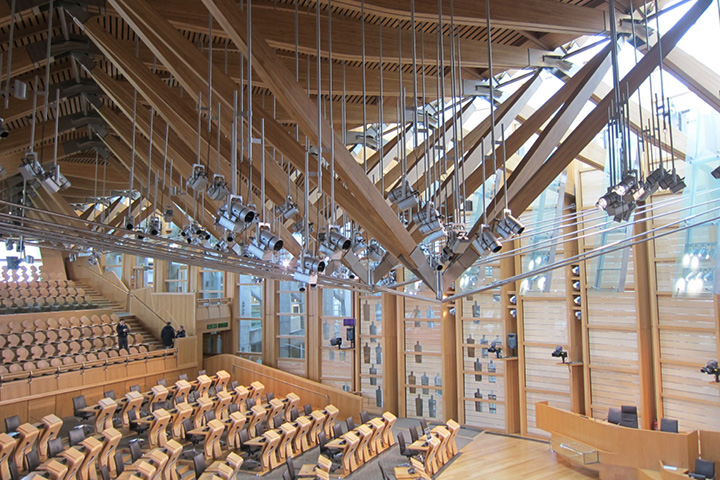Martin Campbell
- Partner

Finance Secretary, Kate Forbes, presented the Scottish Government’s 2021-22 Scottish Budget on 28 January 2021, and in this insight article we take a look at Scottish Income Tax.
This was the Scottish Government’s first post-Brexit Budget, as well as the first since the start of the Covid-19 pandemic. The Finance Secretary confirmed that the spending plans set out may require ‘significant revisions’ following the UK Budget in five weeks’ time on 3 March 2021.
The Scottish Income Tax (‘SIT’) announcements from the Scottish Budget were:
The Land and Buildings Transaction Tax (‘LBTT’) announcements can be summarised as follows:
We will look at who will be affected by these changes, what it means in practice, and the interaction of SIT with other UK wide taxes. Note: The tax raising powers relating to LBTT (the Scottish equivalent to SDLT) and SIT are devolved to the Scottish Government. Other taxes including capital gains tax (‘CGT’), inheritance tax (‘IHT’) and corporation tax continue to be reserved to Westminster.
From 6 April 2021, Scotland will have the following income tax thresholds and income tax bands:
| SIT Bands | Amount | Rate |
|---|---|---|
| Personal allowance | First £12,570 | Nil |
| Starter rate | £12,571 – £14,667 | 19% |
| Basic rate | £14,668 – £25,296 | 20% |
| Intermediate rate | £25,297 – £43,662 | 21% |
| Higher rate | £43,663 – £150,000 | 41% |
| Additional higher rate | Over £150,000 | 46% |
It was stated in HM Treasury’s 2020 Spending Review (issued November 2020) that the UK personal allowance for income tax would be increased by 0.5% (September 2020 Consumer Price Index (‘CPI’) figure). This will mean an increase from £12,500 to £12,570 in the 2021/22 tax year. The Scottish Government have followed suit and increased Scottish income tax band thresholds (with the exception of the additional higher rate threshold) in line with inflation.
The Scottish Government have estimated that the introduction of these measures will result in 54% of Scottish taxpayers paying less tax than their counterparts earning a similar salary in the rest of the UK.
The Scottish Government have stated that all Scottish taxpayers will pay less income tax in the 2021/22 tax year than they did in the 2020/21 tax year on the same level of taxable income.
The following table demonstrates how these changes will currently impact on a higher rate Scottish taxpayer in the 2021/22 tax year with taxable earnings of £50,000 when compared to a taxpayer resident in another part of the UK (based on the rest of the UK rates and thresholds for the 2020/21 tax year).
| Income tax rate bands | Scottish Taxpayer
(2021/22) |
Taxpayer in the rest of UK (2021/22) | ||
|---|---|---|---|---|
| £ | £ | |||
| Personal allowance | £0 – £12,570 | 0 | £0 – £12,570 | 0 |
| Starter (19%) | £12,571 – £14,667 | 398 | N/A | |
| Basic (20%) | £14,668 – £25,296 | 2,126 | £12,570 – £50,000 | 7,486 |
| Intermediate (21%) | £25,297 – £43,662 | 3,857 | N/A | |
| Higher (41%) | £43,663 – £50,000 | 2,598 | N/A | |
| Total | 8,979 | 7,486 | ||
Note: The figures used in this comparison will be updated following the UK Budget on 3 March 2021. It was also stated in HM Treasury’s 2020 Spending Review that the higher rate threshold for the rest of the UK would also increase by 0.5%. This should result in an increase from £50,000 to £50,270 in the 2021/22 tax year.
A Scottish taxpayer with earnings of £50,000 will therefore pay £1,493 more income tax than their counterparts in the rest of the UK. This tax gap will only widen for Scottish higher rate taxpayers as their earnings increase.
There may be a further divergence between Scotland and the rest of the UK if the UK Government announces any cuts to income tax for high earners in the UK Budget.
The SIT is a power which the Scottish Parliament has to set the thresholds and rates of income tax for Scottish taxpayers and therefore the amount that the Scottish Government has to spend. The Scottish Government have estimated that SIT receipts in Scotland will increase to £12,263 million in the 2021/22 tax year.
The SIT applies to the earnings of Scottish taxpayers arising from employment (e.g. salaries, bonuses, etc.), self-employment (e.g. sole-trader and partnership profits), pension income, and income from property (e.g. rent). The UK thresholds and rates of income tax continue to apply to savings income (e.g. interest, dividends, etc.).
The UK Parliament retains control of all other aspects of the income tax regime, including setting the level of the personal income tax allowance and introducing and altering available income tax reliefs, such as those applicable to gift aid donations to charity and pension contributions. Scottish taxpayers therefore benefit, for example, from any increase in the income tax personal allowance announced at the UK Budget.
To find out more about Scottish income tax including:
Read our Scottish income tax guide here.
Our Private Client team offer a full portfolio of advisory services in wealth management, private property, and family advice. It is a full-service solution that is always tailored to meet individual and family needs.
For further information, please contact Martin Campbell.